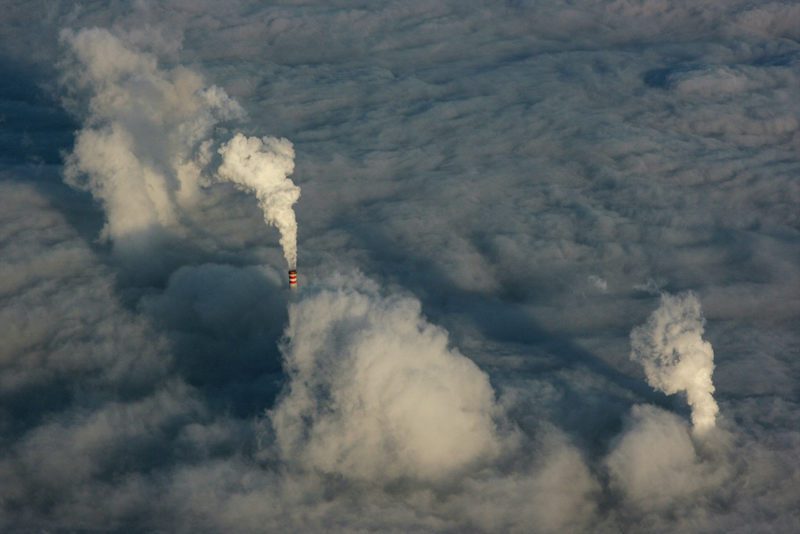What did the Buddhist say to the hotdog vendor?
“Make me one with everything”, says the Buddhist.
The hotdog vendor hands over the food and the Buddhist hands over twenty dollars. He eats the hotdog but feels nothing. Disappointed, he says “hang on a minute, where’s my change?”
And the hotdog vendor replies, “Change comes only from within.”
As people will be well aware, the humour of this story derives from the ambiguity of language. But it is the pithy final line that is most provoking. The vendor’s witty reply matches the Buddhist’s complex food request by targeting the very kernel of his customer’s beliefs. Amusing this may be, one may also see it as a fable that is applicable to subjects outside of Buddhists at fast food joints.

The fundamental purpose of carbon credits is to reduce greenhouse gas emissions. As the global appetite for carbon markets becomes ever greater, we see businesses, asset managers, and other high-net-worth individuals rush to buy up land as the Anthropocene rages on. The image of urban, technophilic, Silicon Valley employees of the likes of Microsoft, Apple, or Amazon, turning their hands to the soil as reborn sedentary keyboard climate warriors is somewhat counter-intuitive. Between Bill Gates and Jeff Bezos, there are around 700,000 acres of land owned across the globe in the name of Mother Nature’s well-being. Writing on his own blog, Bill Gates noted that he spends approximately $5 million a year on offsetting his family’s carbon footprint through credits. Moreover, he adds, “Since the way we calculate carbon footprints is still in its infancy, I take our family’s carbon footprint and double it to make sure we are fully covering our footprint and then some”. This very remark acknowledges that there are no standard guidelines universally used, which has arguably led to the sector marred with controversy and deceit.
This lack of integrity in carbon credits begs the question as to what they are offsetting anyway.
Rather than reducing emissions, carbon credits could be argued to merely provide companies with the right to emit greenhouse gases whilst displaying an environmentally conscious façade. The issue with carbon credits is that they try to be everything to every man; a holistic approach with a great hole at their centre. As the hotdog seller said, change must instead come from within. Raworth lays out in her 2017 book, Doughnut Economics, that central to a self-supporting Earth is fertile soil, a stable climate, and a protective ozone layer. In accordance, carbon credits could be viewed as providing a financial incentive for reducing carbon footprint without actually offsetting emissions in real terms. In such instances, carbon leakage occurs with differing jurisdictions having inconsistent emission reduction requirements, leading to varied carbon pricing. This system allows corporations to enter into a ‘buy now pay later’ scheme where GHGs are emitted, land purchased, and trees promised to be planted in the future. As recent revelations have shown, ecological work in fact never occurred. Therefore, carbon credits lose all meaning when one finds ambiguity in their interpretation. This lack of integrity in carbon credits begs the question as to what they are offsetting anyway.
One may view ESG funds that claim to support the transition to a low-carbon economy, through incorporating carbon credits, as taking a ‘pick-n-mix’ approach to fund picking whereby all bases are covered. This “Make me one with everything” investor mindset has at its core self-regulation and self-congratulation; do we not all perform well when we mark our own homework?

Most recently, even Verra Carbon Standards – the world’s leading certifier who are used by the likes of Disney, Shell, and Gucci — found that based on analysis of a significant percentage of the projects, more than 90% of their rainforest offset credits to be “phantom credits”. Thus, essential to delivering truly measurable carbon emission mitigation and alignment with key SDGs is to be associated with an independent body of the highest standard of scrutiny. This oversight is paramount to a fund’s integrity.
In summary, a takeaway for climate-conscious investors of today is to beware of the wolf in sheep’s clothing. Everyone wishes to profit from successful companies, but do not pull the wool over your eyes when investing in so-called environmentally friendly funds. By ensuring a fund has an independent body to assess validity is valuable to both your current and future portfolio.






